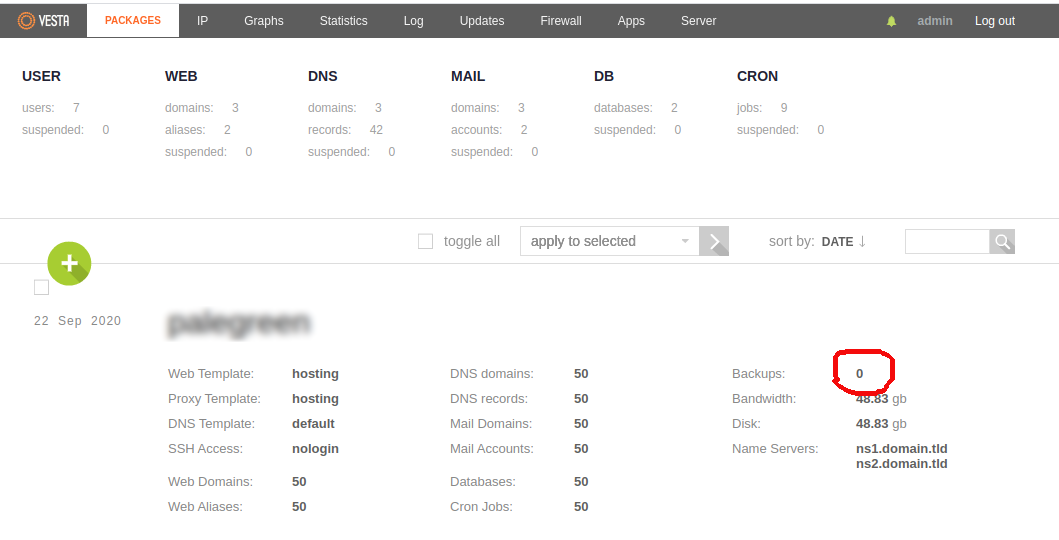lvs command is used to display logical volumes. You can also use command lvdisplay
root@server70:~# lvs
LV VG Attr LSize Pool Origin Data% Meta% Move Log Cpy%Sync Convert
data pve -wi-ao---- 93.65g
vm-100-disk-1 pve -wi-ao---- 500.00g
vm-101-disk-1 pve -wi-ao---- 50.00g
vm-102-disk-1 pve -wi-ao---- 100.00g
vm-104-disk-1 pve -wi-ao---- 800.00g
vm-105-disk-1 pve -wi-ao---- 32.00g
vm-105-disk-2 pve -wi-ao---- 6.00g
vm-106-disk-1 pve -wi-ao---- 50.00g
vm-108-disk-1 pve -wi-ao---- 32.00g
root@server70:~#
To get detailed list, use lvdisplay command
root@server70:~# lvdisplay
--- Logical volume ---
LV Path /dev/pve/data
LV Name data
VG Name pve
LV UUID l7KQll-xHh4-NeJZ-A0q2-H30v-tj3U-DoOM8s
LV Write Access read/write
LV Creation host, time rescue.ovh.net, 2015-12-17 19:45:51 +0000
LV Status available
# open 1
LV Size 93.65 GiB
Current LE 23975
Segments 1
Allocation inherit
Read ahead sectors auto
- currently set to 256
Block device 253:0
--- Logical volume ---
LV Path /dev/pve/vm-100-disk-1
LV Name vm-100-disk-1
VG Name pve
LV UUID DyrKed-bfZT-pyjO-DU6C-h7Nc-Qfy5-SYbbJe
LV Write Access read/write
LV Creation host, time server70, 2015-12-21 05:57:53 +0000
LV Status available
# open 1
LV Size 500.00 GiB
Current LE 128000
Segments 1
Allocation inherit
Read ahead sectors auto
- currently set to 256
Block device 253:1
--- Logical volume ---
LV Path /dev/pve/vm-105-disk-1
LV Name vm-105-disk-1
VG Name pve
LV UUID bBHa7g-VBvY-nZfB-lAcw-0eL7-MBOz-QTGKKV
LV Write Access read/write
LV Creation host, time server70, 2016-01-11 06:15:37 +0000
LV Status available
# open 1
LV Size 32.00 GiB
Current LE 8192
Segments 1
Allocation inherit
Read ahead sectors auto
- currently set to 256
Block device 253:2
--- Logical volume ---
LV Path /dev/pve/vm-105-disk-2
LV Name vm-105-disk-2
VG Name pve
LV UUID zHJvYJ-UjWi-u6dK-ez0u-5kcA-6pJH-PIqmgg
LV Write Access read/write
LV Creation host, time server70, 2016-02-26 08:09:56 +0000
LV Status available
# open 1
LV Size 6.00 GiB
Current LE 1536
Segments 1
Allocation inherit
Read ahead sectors auto
- currently set to 256
Block device 253:3
--- Logical volume ---
LV Path /dev/pve/vm-106-disk-1
LV Name vm-106-disk-1
VG Name pve
LV UUID p7CBJM-tI3v-zH3G-BhhD-Xabx-UY0R-wOpm6n
LV Write Access read/write
LV Creation host, time server70, 2016-03-27 17:10:46 +0000
LV Status available
# open 1
LV Size 50.00 GiB
Current LE 12800
Segments 1
Allocation inherit
Read ahead sectors auto
- currently set to 256
Block device 253:4
--- Logical volume ---
LV Path /dev/pve/vm-101-disk-1
LV Name vm-101-disk-1
VG Name pve
LV UUID 2aUOze-mNh0-rXnn-qc1J-xpvy-ubhO-SgvEi8
LV Write Access read/write
LV Creation host, time server70, 2016-04-15 04:08:34 +0000
LV Status available
# open 1
LV Size 50.00 GiB
Current LE 12800
Segments 1
Allocation inherit
Read ahead sectors auto
- currently set to 256
Block device 253:5
--- Logical volume ---
LV Path /dev/pve/vm-108-disk-1
LV Name vm-108-disk-1
VG Name pve
LV UUID RqTmNC-0IL6-N67Q-nh0a-MmS7-9G00-S3KqZy
LV Write Access read/write
LV Creation host, time server70, 2016-12-09 20:46:32 +0000
LV Status available
# open 1
LV Size 32.00 GiB
Current LE 8192
Segments 1
Allocation inherit
Read ahead sectors auto
- currently set to 256
Block device 253:6
--- Logical volume ---
LV Path /dev/pve/vm-102-disk-1
LV Name vm-102-disk-1
VG Name pve
LV UUID 11FKBs-gSYi-owds-4wLU-kT7z-xwcm-lZnamc
LV Write Access read/write
LV Creation host, time server70, 2018-04-28 09:11:33 +0000
LV Status available
# open 1
LV Size 100.00 GiB
Current LE 25600
Segments 1
Allocation inherit
Read ahead sectors auto
- currently set to 256
Block device 253:7
--- Logical volume ---
LV Path /dev/pve/vm-104-disk-1
LV Name vm-104-disk-1
VG Name pve
LV UUID WrdrmV-jj6z-Nb23-Pdlz-lLYn-wUVZ-hlF5XU
LV Write Access read/write
LV Creation host, time server70, 2018-04-29 16:31:28 +0000
LV Status available
# open 1
LV Size 800.00 GiB
Current LE 204800
Segments 2
Allocation inherit
Read ahead sectors auto
- currently set to 256
Block device 253:8
root@server70:~#
See lvm




